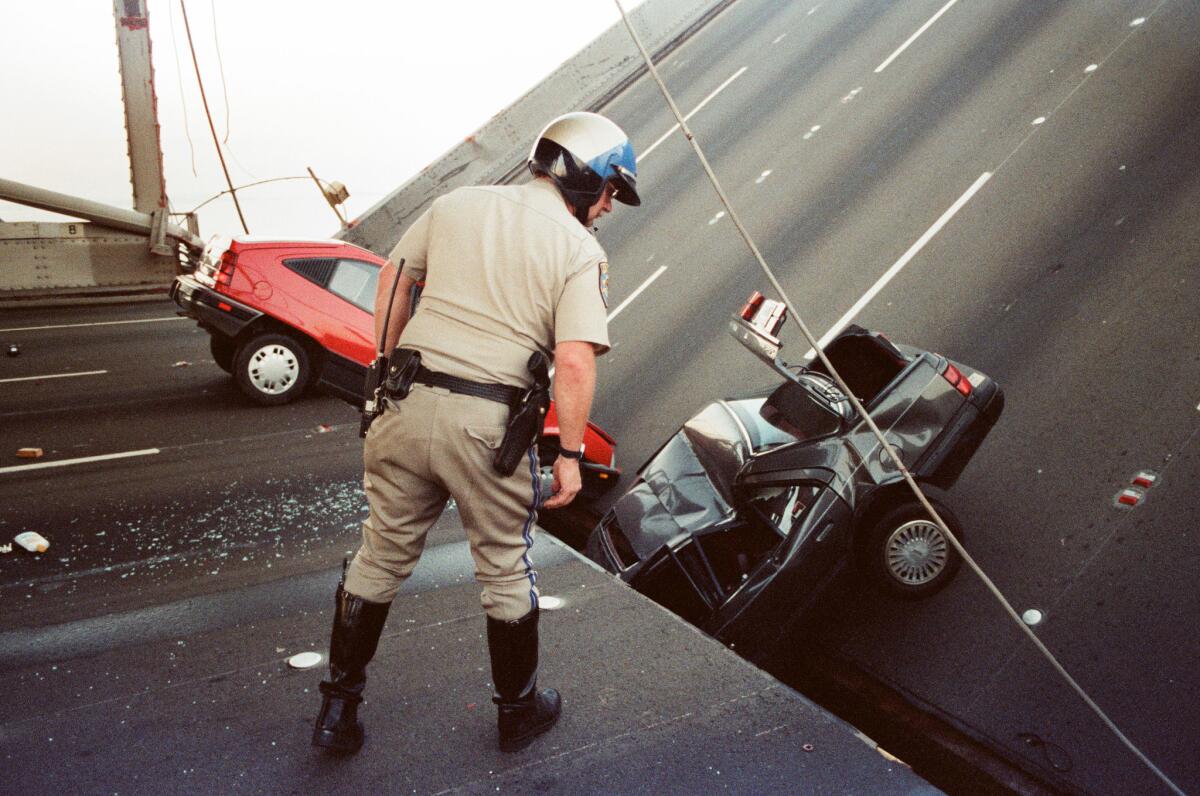Legislature wants quake warning system, but doesn’t want to pay for it

- Share via
State legislators gave final approval Thursday to a bill authorizing a new earthquake early warning system to alert Californians when temblors are heading their way, although the measure wouldn’t provide the money needed to build it.
SB 135 by Sen. Alex Padilla (D-Pacoima) calls on the state Office of Emergency Services to develop such a system through a public-private partnership, in collaboration with state and federal agencies and other stakeholders. It would be based on the California Integrated Seismic Network, a network of quake sensors operated by the U.S. Geological Survey, the California Geological Survey, Caltech and UC Berkeley.
The Times’ editorial board has opined in favor of the bill, although it acknowledged the hurdles posed by the cost and some unresolved technical issues. “The implementation issues notwithstanding, it’s clear that the technology exists to mitigate the potentially catastrophic damage a major earthquake would cause in California. Lawmakers should find a way to put it to use,” the editorial board wrote in February.
Modeled after early warning efforts in Japan, Mexico and other quake-prone countries, the system would take advantage of sensors’ ability to detect the underground movements that happen shortly before an earthquake’s more violent waves reach the surface. In addition to giving people a few seconds to prepare, the goal is to alert transit systems, factories and building operators in time to stop trains, machinery and other vulnerable equipment before the shaking begins.
One challenge facing the project is the cost: an estimated $23 million to install the sensors and other technology needed to complete the system, plus about $12 million annually to operate it. The bill gives the Office of Emergency Services until Jan. 1, 2016, to identify where the money could come from, including federal grants, bond funds and local contributions. It explicitly bars the office from tapping the state general fund for any project-related expenses that it’s not already covering.
The bill doesn’t specify how the public-private partnership would work. Possibilities include relying on private companies to come up with ways to feed the alerts into industrial control systems -- for example, enabling Metrolink trains to be halted automatically when a quake hits -- or even integrate the sensors they operate into the state’s network.
Nor does the bill set performance standards for the system or its components, leaving that task to the Office of Emergency Services. Those standards could be contentious. Seismic Warning Systems of Scotts Valley, Calif., which is developing its own earthquake alerts, has argued that the California Integrated Seismic Network’s technology doesn’t send out alerts fast enough to help the communities within a few miles of a quake’s epicenter. That would eliminate almost all the value of the alerts for quakes whose epicenters were near a densely populated area, as was the Northridge earthquake in 1994. Supporters of the CISN say it’s improving its technology to speed up the alerts.
In a prepared statement, Padilla urged Gov. Jerry Brown to sign the bill. “California is going to have an earthquake early warning system; the question is whether we have one before or after the next big quake,” Padilla said. He added: “A fully developed earthquake early warning system will provide Californians critical seconds to take cover, assist loved ones or pull over safely to the side of the road. It could allow time to stop a train and power down critical infrastructure. Most importantly, it will save lives.”
ALSO:
America’s Cup: Huge egos, fast boats
After Obama’s Syria speech, readers call for action
iPhone 5S foils the ‘Apple pickers’ -- but watch out for your fingers
Follow Jon Healey on Twitter @jcahealey and Google+
More to Read
A cure for the common opinion
Get thought-provoking perspectives with our weekly newsletter.
You may occasionally receive promotional content from the Los Angeles Times.







